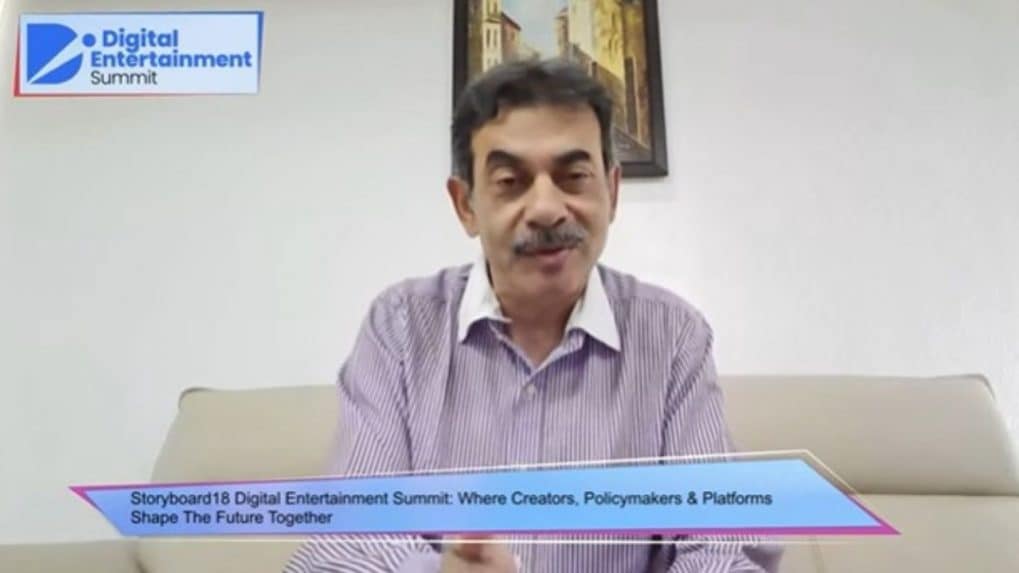India can lead in AVGC, but industry must focus on 'finishing skills': Jayesh Ranjan, Govt of Telangana at Storyboard18 DES 2025
Speaking at Storyboard18’s Digital Entertainment Summit (DES) 2025, Jayesh Ranjan, Special Chief Secretary, Government of Telangana underscored how Telangana is an early mover with a strong policy foundation and the first state to come out with progressive AVGC policy.
ADVERTISEMENT
In a special address that underscored that highlighted how Telangana has emerged as a frontrunner in India’s AVGC (Animation, Visual Effects, Gaming, and Comics) sector by combining early policy innovation, large-scale infrastructure, and industry-integrated skilling, Jayesh Ranjan, Special Chief Secretary, Government of Telangana lays out how the state is building a globally competitive ecosystem from the ground up.
Speaking at Storyboard18’s Digital Entertainment Summit (DES) 2025, Ranjan underscored how Telangana is an early mover with a strong policy foundation.
“Telangana recognized the potential of this sector much earlier than others. After becoming a separate state in 2014, we identified the AVGC sector as a flagship component of our digital economy. We were possibly the first state to come out with a progressive AVGC policy, and we’re now working on version 2.0. This policy was built bottom-up, addressing real challenges faced by the industry,” said Ranjan.
He added that the state didn’t just stop at policy. “Beyond policy, we’ve taken five concrete steps—most notably, the construction of the IMAGE Tower in Hyderabad. This is a 1.6 million sq. ft. Grade A facility with ₹1,200 crore of state investment. It’s expected to generate 30,000 jobs and attract over 150 VFX companies.”
Hyderabad’s AVGC Strengths
Highlighting the state's cinematic dominance, Mr. Ranjan said: “In the last 15 years, 12 of the highest-grossing Indian films came from the South—9 of them from the Telugu industry. Even films from Tamil Nadu and Karnataka often have their post-production and VFX work done in Hyderabad.”
He also pointed out leadership from the region: “We also have a significant leadership presence in this sector—about 15–16% of India’s top AVGC company CEOs are from Telangana.”
Unlike many Indian states that react to industry momentum, Telangana took a deliberate, planned approach. “Unlike many states, we didn’t wait for an organic ecosystem to emerge and then react. We preemptively built a cohesive one—combining policy, infrastructure, talent development, and incentives,” said Ranjan.
A key differentiator is talent development. “We run specialized skill-building programs through institutions like TASC (Telangana Academy for Skills and Knowledge). For example, Crunchyroll (a Sony company) is setting up a 2,000-employee anime studio in Hyderabad. When they expressed concern about the skill gap, we committed to training 5,000 people to meet their standards—entirely free for the company.”
Reimagining Skill Development Through Industry-Led Education
To solve the persistent talent gap in emerging fields, Telangana launched an unconventional university model.
“It's a new model. The university only has two employees: a Vice Chancellor and a Registrar. All training is delivered by the industry. We provide infrastructure, mobilize students, create labs, and pay the fees. Companies bring their trainers and run the programs. This model ensures the curriculum is always aligned with real-world demands,” said Mr. Ranjan.
Acknowledging the regulatory complexity in online gaming, Ranjan shared. “The gaming sector offers economic potential, but also raises concerns like addiction, underage participation, and fraud. Blanket bans don’t work. While Telangana has had its own bans, I don’t believe that’s the long-term solution,” he said.
He also flagged limitations in the current national framework. “The current national approach of self-regulatory bodies (SRBs) hasn’t worked well either—due to elite capture and fragmentation. We are now exploring a third model that balances innovation and consumer protection. It’s not an easy solution, but necessary.”
Incubating Innovation from the Ground Up
Innovation is as central to Telangana’s AVGC strategy as talent and infrastructure.
“Telangana set up India’s first dedicated incubator for the AVGC sector eight years ago called the IMAGE Incubator. More than 250 startups have gone through it. We’re also investing in R&D and advanced user engagement. Innovation is as central to our strategy as talent.”
“We are trying to tick all the boxes: infrastructure, policy, talent, innovation, and ease of doing business. That’s why Hyderabad and Telangana are becoming global hubs for the AVGC economy,” Ranjan concluded.

